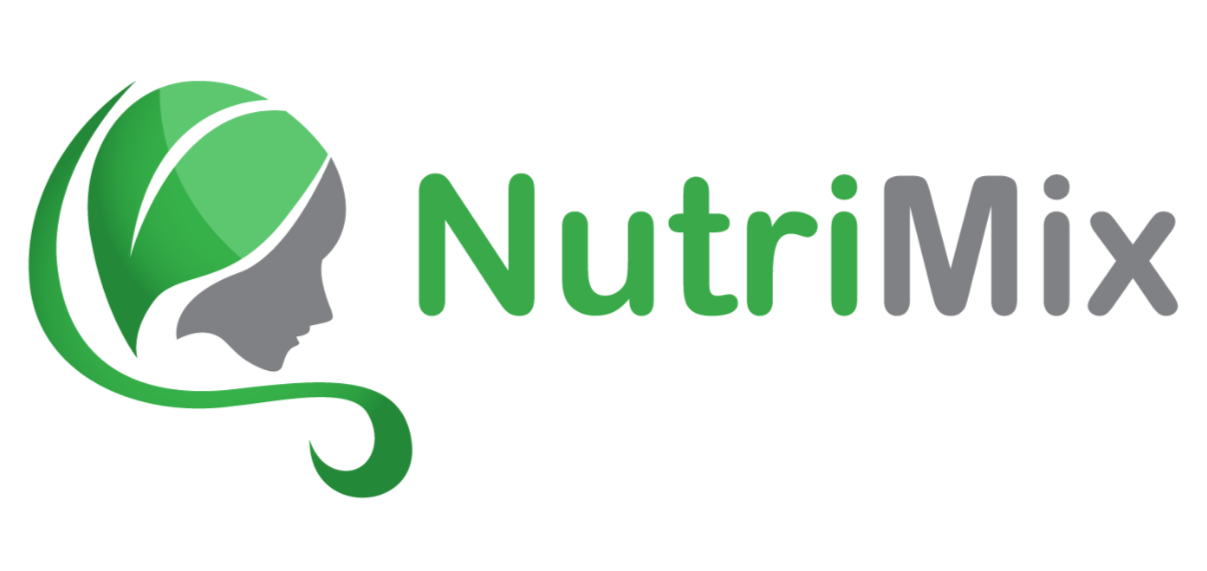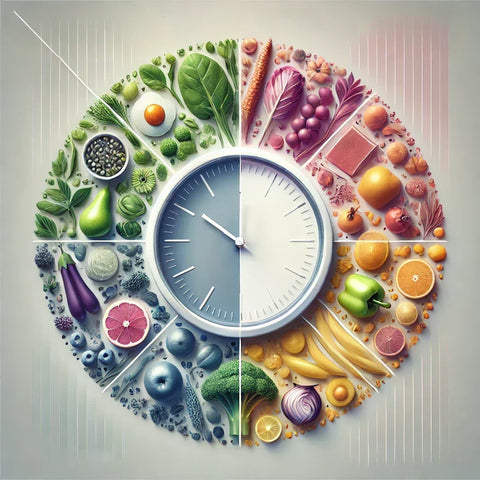In today’s fast-paced world, grocery shopping can feel overwhelming—especially when faced with countless food labels filled with numbers, percentages, and ingredients you might not recognize. However, understanding these labels is a powerful way to take control of your health. In this guide, we’ll break down the information you need to make informed decisions at the store, helping you select foods that align with your health goals.
Introduction: Why Food Labels Matter
Food labels are more than just a regulatory requirement; they’re a window into the nutritional value of what you’re consuming. Whether you’re trying to lose weight, manage a chronic condition, or simply live a healthier lifestyle, being able to read and understand food labels can help you:
- Avoid Unwanted Additives: Learn which ingredients may not support your well-being.
- Control Your Intake: Monitor calories, fats, sugars, and sodium levels.
- Make Healthier Choices: Compare products to select those that are truly beneficial for your diet.
By demystifying food labels, you empower yourself to shop smarter and eat better.
1. Understanding the Nutrition Facts Panel
The Nutrition Facts Panel is your roadmap to understanding what’s inside your food. Here’s a closer look at its components:
A. Serving Size and Servings Per Container
- Serving Size: This tells you the specific amount of food that the nutritional information is based on. It's important because the values on the label reflect one serving, not the entire package.
-
Servings Per Container: This indicates how many servings are in the whole package.
Tip: If you eat more than one serving, be sure to multiply the nutritional values accordingly.
B. Calories and Macronutrients
- Calories: A measure of energy. Keep an eye on this if you're managing your energy intake for weight control or activity levels.
-
Macronutrients:
- Total Fat: Look at both the total fat and the breakdown between saturated and trans fats.
- Carbohydrates: Note the total carbs, dietary fiber, and sugars (both naturally occurring and added).
-
Protein: Essential for muscle repair and growth, and helps keep you feeling full.
Tip: Aim for a balanced distribution of these nutrients according to your dietary needs.
C. Micronutrients and Daily Values
- Vitamins and Minerals: Labels often list important nutrients like Vitamin D, calcium, iron, and potassium.
-
% Daily Value (%DV): This percentage tells you how much a serving of the food contributes to your daily nutritional needs based on a 2,000-calorie diet.
Tip: A %DV of 5% or less is considered low, while 20% or more is high—use this as a quick gauge of nutrient content.
D. Additional Information
- Calories from Fat: Some labels also list the calories that come specifically from fat, which can help you understand the food’s fat content at a glance.
- Cholesterol and Sodium: High levels can be a concern for heart health; use these numbers to manage your intake if needed.
2. Navigating the Ingredients List
The ingredients list is your next stop in understanding what’s really in your food.
A. Order of Ingredients
-
Weight Order: Ingredients are listed in descending order by weight, meaning the first few ingredients are the most prominent in the product.
Tip: A product with whole foods listed at the top (like whole grains or vegetables) is typically a healthier choice.
B. Identifying Additives and Preservatives
-
Common Additives: Look for artificial colors, flavors, and preservatives that may not be beneficial for your health.
Tip: Learn to recognize names like MSG (monosodium glutamate), sodium nitrate, and artificial sweeteners. These can be red flags if you’re aiming for a cleaner diet.
C. Hidden Sugars and Unhealthy Fats
- Sugar Under Many Names: Be aware that sugar can appear under various names, such as sucrose, maltose, dextrose, and corn syrup.
-
Fats: Pay attention to terms like "partially hydrogenated oils," which indicate the presence of trans fats.
Tip: Even if a product is labeled as “low-fat,” it may compensate with added sugars for flavor, so always review both the ingredient list and nutrition panel.
D. Special Ingredients and Allergens
- Allergen Information: If you have dietary restrictions, check for allergens like nuts, gluten, dairy, or soy.
- Fortified Foods: Some products have added vitamins or minerals. While this can be beneficial, it’s best to obtain nutrients from whole foods when possible.
3. Tips for Effective Label Reading
Implementing a few strategies can streamline your label-reading process:
A. Compare Similar Products
-
Side-by-Side Analysis: When shopping, compare the Nutrition Facts Panels of similar products to choose the one with a better nutrient profile.
Tip: Look for higher fiber content, lower added sugars, and balanced amounts of fats and proteins.
B. Look Beyond Marketing Claims
-
Buzzwords and Labels: Terms like “natural,” “organic,” or “multigrain” can be appealing but sometimes misleading.
Tip: Always cross-reference these claims with the actual nutritional information. Just because something is labeled “organic” doesn’t automatically mean it’s nutritionally superior.
C. Use Technology to Your Advantage
- Nutrition Apps: There are many apps available that allow you to scan barcodes and receive detailed nutritional information. These tools can simplify comparisons and help you make quick decisions.
- Online Databases: Utilize websites and online resources that analyze food labels, giving you an extra layer of insight.
D. Make a Cheat Sheet
- Key Terms List: Consider keeping a small list of common additives, sugars, and fats on your phone or in your wallet. This can serve as a quick reference guide when you’re on the go.
4. Common Myths and Misconceptions
There are several myths about food labels that can lead to misguided choices. Here’s a closer look:
Myth 1: “Low-Fat” Means Healthy
- Reality: Low-fat products can sometimes contain added sugars or starches to enhance flavor, making them less healthy overall.
- Example: Low-fat yogurt might have extra sugars to compensate for reduced creaminess, negating some of its health benefits.
Myth 2: “Gluten-Free” Is Automatically Healthier
- Reality: Gluten-free products are essential for people with celiac disease or gluten sensitivity, but they can be higher in fats or sugars to improve taste.
- Example: Gluten-free snacks often substitute traditional ingredients with refined starches, which might not be nutritionally superior.
Myth 3: “Organic” Equates to Better Nutrition
- Reality: Organic products are grown without synthetic pesticides and fertilizers, which is beneficial for the environment and reduces chemical exposure. However, the nutritional content is often similar to non-organic counterparts.
- Example: An organic apple contains similar vitamins and fiber as a conventionally grown apple.
Myth 4: “Natural” Is Synonymous with Healthy
- Reality: The term “natural” isn’t strictly regulated and can be used loosely. It doesn’t guarantee the absence of additives or processing.
- Example: Natural peanut butter might still contain added sugars or salts.
5. Real-Life Application: A Day of Eating and Label Analysis
Let’s walk through a day’s worth of meals, using food labels to guide healthier choices:
Breakfast: Oatmeal with Berries
- Oatmeal: Check for added sugars or artificial flavors. Opt for plain oats and add your own fruits.
- Berries: Look for frozen options without added sugars. The label should list just the fruit, with no preservatives.
Lunch: Salad with Grilled Chicken
- Chicken Breast: Choose fresh, minimally processed chicken. If buying pre-cooked, check for sodium levels.
- Salad Dressing: Many store-bought dressings have hidden sugars and unhealthy fats. Read the labels to find one with natural ingredients, or consider making your own with olive oil and vinegar.
Snack: Yogurt and Nuts
- Yogurt: Look for plain, unsweetened yogurt. Check the ingredients for live cultures, and avoid added sugars or artificial sweeteners.
- Nuts: Choose raw or dry-roasted nuts without added salt or oils. The ingredient list should be short, typically just the nuts.
Dinner: Stir-Fry with Quinoa
- Quinoa: Ensure it’s plain without added flavors or preservatives.
- Stir-Fry Sauce: Many sauces are loaded with sodium and sugars. Reading the label can help you decide if it’s worth adding or if you should opt for a homemade alternative.
By applying label-reading strategies throughout your day, you make choices that contribute to a balanced, nutrient-rich diet.
6. Expert Opinions and Research on Food Labeling
Numerous studies highlight the impact of clear labeling on consumer choices. For example:
- Research Insight: Studies have shown that consumers who understand food labels are more likely to choose products with lower sugar and sodium, leading to improved overall health.
- Expert Opinion: Nutritionists emphasize that while labels are an excellent starting point, the quality of the overall diet matters. A balanced diet built on whole, minimally processed foods remains key to good health.
Experts also suggest that food manufacturers can play a role by simplifying labels and reducing the use of confusing buzzwords. As a consumer, staying informed through trusted sources is crucial for making the best choices.
Conclusion: Empower Your Food Choices Through Knowledge
Decoding food labels is an empowering skill that gives you the knowledge to take control of your diet and health. By understanding the Nutrition Facts Panel, navigating the ingredients list, and debunking common myths, you’re better equipped to make choices that align with your wellness goals. Here are the key takeaways:
- Always read the serving size and adjust nutritional values accordingly.
- Compare products side by side to find the best nutrient profile.
- Use technology and create a cheat sheet for quick reference.
- Be skeptical of marketing buzzwords and learn the truth behind common myths.
The next time you’re at the grocery store, take a moment to analyze the labels on your food. Each informed choice is a step toward a healthier, more vibrant life. Remember, knowledge is power—especially when it comes to what you eat.



